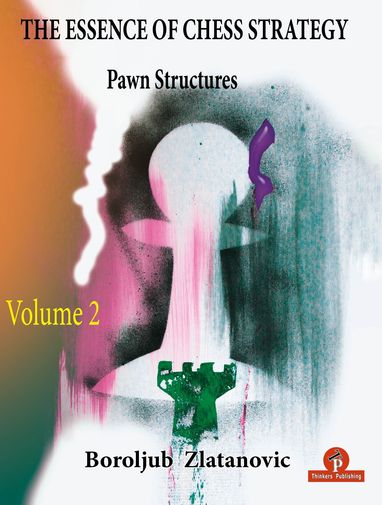Here we are, together on this page, both interested in the French Defence with 3.Nc3 Bb4. Before telling you what you can learn from this opening, let me tell you a little story about my journey in the French. I started playing the French after reading John Watson’s Play the French, which improved my play a lot. I learned that the French is a positional yet concrete opening, and many of my young opponents couldn’t grasp its subtleties. Moreover, many opponents were far less prepared against 1…e6 than against 1…c5 or 1…e5.
Unfortunately those days would end. During the 2008 Dutch Youth Championships (U20), I understood that everyone would throw 7.Qg4 in the Winawer at me. In that respect, my opening preparation was simple: I’d study the Winawer for Black very intensively and the problem would be solved. In reality, I faced many difficul-ties. Novelties I’d find in the evenings were promptly refuted by the engine the next morning; I was constantly thinking about the French, but I couldn’t quite make it work. There was this strange, inexplicable feeling in my stomach, some might call “butterflies”. I had fallen in love with a chess line! Despite my two losses in the crucial games, I still believed I had a great repertoire with countless novelties to show for it.Which line was that?Alas, that variation, with 7…0-0 and 8…Nbc6, is almost refuted nowadays. Thus, I was obliged to spend a considerable amount of time adjusting my repertoire to present a sound recommendation for this book.
I devoted three months to learning a completely new, sharp line –namely, the Poisoned PawnVariation, characterized by 7....Qc7 8.Qxg7 Rg8 9 Qxh7 cxd4. Fortunately, this tactical jungle has proven to be an excellent fighting zone. After seven months, the result, here before you, is a massive update on the Winawer Variation.Usually one imaginesthe classical writer sitting, pondering behind his desk in his book-lined study. Well, not this one. I have travelled and lived in various places during the writing process.
Part One was conceived in Krakow, Poland. A wonderful place with wonderful peopleand memories I am fond of. Then, surrounded by the golden wheat fields of Denmark, I discovered that my old pet line has been refuted forever. Although I would love to share the new things I have found there, there is no point devoting a lot of space to abad line. The second part, then, was mostly written in the hamlet of Mollerup, Denmark.Lastly, to round it all up and make the final checks, I went to Plovdiv, Bulgaria –the oldest city in Europe! This is where all the move-orders and transpositions finally started to make sense. I am thankful for all these places. Travelling really broadens the horizon, and I would recommend you to take this copy with you to start a jour-ney on your own.But wait. Why should you take this journey?Well, chess issport. To win, you must cause your opponents to err.
The Winawer is very difficult to face for those who have not studied it properly. This means you’ll often win simply by learning the lines well. Along the way, you’ll get better at closed and unbalancedpositions and suddenly, you’ll know how to play with a “bad bishop”!Well, chess is also art. Rest assured, you’ll experience true aestheticism with this opening. From strange queen manoeuvres to stunning sacrifices and more, the journey will be like exploring a new city, finding beauty around every corner.Along this journey, you must have had some support.Yes, I did, there is a long list. Reaching from the inventors of chess to the Spokoj bar in Krakow, where I wrote most of the book. But let’s not forget everything in be-tween. I would like to thank: my parents for solving my childhood boredom with chess; the volunteers of my old chess club in Eindhoven for teaching the youth every single week; the late Theo van den Berkmortel for showing me the key ideas in the French; Jos Sutmuller for his flawless bad-bishop exchanges in 10,000 blitz games; everyone who aided me to play international open tournaments when I needed it the most; my school for allowing me to be in France instead of the class-room; NIC Yearbookfor publishing my first survey;the families I’ve lived with as a chess trainer; the friends who support my passion for chess, especially the ones at Sint Anna 74; the clubs that keep me in their team, even though I have a bad season; Thinkers Publishing and the editorial team for their hard work and offering me this opportunity; and last but not least, my brave opponents who play 3.Nc3 and do not take 3.exd5. Just in case I have mistakenly skipped you, know that I am address-ing you right now. I might just have saved you for another volume.
What about the next volume?Well, that will cover everything apart from 3.Nc3. I will start a new journey to complete that. After studying that book as well, you should be armed with a complete 2020-ready French repertoire
Lisbon 2019
David Miedema
PART I –Deviations Before Move Seven
Chapter 1-4. Qg4?! (The Impatient Queen)
Chapter 2–4. Qd3 (The Clever Queen)
Chapter 3–4. a3 (Doubled Pawn Warfare)
Chapter 4–4. Ne2 (Knights Before Bishops)
Chapter 5–4. exd5 (The Winawer Exchange Variation)
Chapter 6–4. e5 Ne7 5.Qg4 (The Slightly Less ImpatientQueen)
Chapter 7–5. Bd2 b6! (Breaking The Pin)
Chapter 8–5. a3 Bxc3+ 6.bxc3 b6 (Bad Bishop Incoming)
PART II –The Main Lines
Chapter 9–7. Nf3?!&Other 7thMoves(Tutti Frutti)
Chapter 10–7. a4 (Dark Square Ambition)
Chapter 11–7. h4 (The Edgy-Edge Pawn)
Chapter 12–7. Qg4 Qc7 8.Bd3 (Poison? No, Thanks!)
Chapter 13–10 Move Alternatives & 10.Kd1 (Max Euwe’s Move)
Chapter 14–10. Ne2 dxc3 11th& 12thMove Options (Nxc3 Systems)
Chapter 15–12. h4!? (The Bazooka Line)
Chapter 16–12.Qd3 (Old Town, New Playground)
 Excerpt
Excerpt


